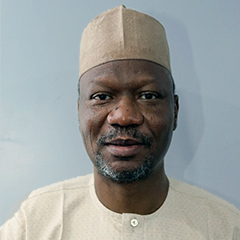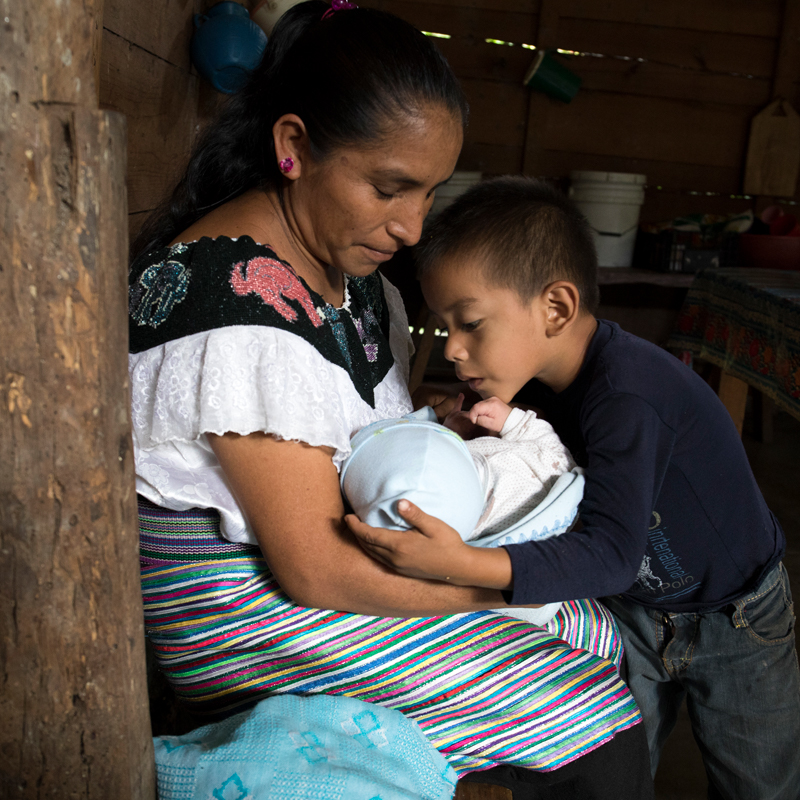Originally published in the Nigerian Guardian, director of MacArthur's Africa office Kole Shettima outlines how the country can greatly reduce the number of women who die during or after childbirth.
"Countdown to Reducing Maternal, Newborn and Child Deaths: A Collective and Integrated Responsibility" is the theme for this year's Safe Motherhood Day celebrated on May 22. In Nigeria and indeed the whole world, the achievement of the Millennium Development Goals (MDGs) depends on progress in northern Nigeria.
About 500,000 women die due to complications of pregnancy worldwide; 54,000 of the death or 10 percent occurs in Nigeria although we are only 1.7 %. In other words, a Nigerian woman dies every 10 minutes from the complications of pregnancy. Before you finish reading this article, a woman would have died due to childbirth.
Northern Nigeria has double responsibilities on the achievement of the MDGs. If the global indicators and especially MDG 4 (reduce child mortality) and MDG 5 (improve maternal health), are to be achieved, significant progress must be recorded in Nigeria; and for Nigeria to make remarkable progress, the indicators in northern Nigeria must change. Hence our strategy on the MDGs should focus on the part of the world, which carries the highest disease burden, northern Nigeria.
All available data on maternal and infant health show the dire situation in northern Nigeria. A facility-based maternal mortality survey conducted by the Society of Gynecology and Obstetricians of Nigeria (SOGON) reveals the number of maternal deaths per 100,000 births in Lagos (3380), Kano (7523), Maiduguri (727), Jos (846), Calabar (2972) and Enugu (783). A survey by the Federal Office of Statistics and UNICEF confirmed that maternal mortality is more serious in the northern part of the country: 165 in the Southwest, 286 in the Southeast, 1025 in the Northwest and 1549 in the Northeast. Infant mortality and under-five mortality follow the same pattern as maternal mortality. For example, infant mortality is 125 per 1000 live births in the Northeast as against 66 in the Southeast, and under-five morality is 269 live births in the Northwest as against 113 in the Southeast.
Medical and sociological causes of maternal mortality are known and so are the interventions. The medical causes are bleeding (23%), hypertension (11%), infection (17%), insufficient blood levels (11%), unsafe abortion (11%), malaria (11%), obstructed labor (11%) and HIV/AIDS and others (5%). Infant mortality is largely due to neonatal (26%) and malaria (24%). Poverty, gender inequality and other forms of cultural and social discriminations are at the root of maternal and infant mortality.
Two of the underlying causes of maternal and infant mortality are also part of the MDGs. These are poverty (MDG 1) and gender inequality (MDG 3). As expected the prevalence of poverty and gender inequality are also worst in the northern part of the country. For instance, the incidence of poverty as measured by Food-Energy household consumption is as follows: Northeast (70.3%), North-central (66.5%), Northwest (65.4%), South-south (55.8%), Southwest (46.1%) and Southeast (39.8%). Jigawa State has the highest incidence of poverty of 90.9%. What is equally disturbing is that inequality within the north is greater than within the south.
The gender disparities in education illustrate the level of gender inequality in northern Nigeria. Whereas 75% of women have no education in the northwest, in the southeast the figure is 8%. Of the 13 states with gender disparity in primary and secondary education, 11 of these states are in the north. A survey in 2006 in the Northwest and the Northeast recorded enrolment rates for girls in Junior Secondary School lower than Sub-Saharan Africa average of 26%.
Fortunately, low cost and simple medical and social interventions to prevent and reduce maternal mortality and infant mortality have been documented. Bleeding can be effectively managed with a simple device called the Anti-shock garment. This device can keep a bleeding woman a live for up to 48 hours until she can be given blood transfusion. Magnesium Sulfate is a well-researched medication for hypertension, and it costs about N1200 to treat a patient. Medical doctors in Murtala Specialist Hospital, Minjibir Hospital and Wudil Hospital have referred to Magnesium Sulfate as "wonder drug" and "miracle drug". I recently had a pleasant visit to these facilities to see the use of the Anti-Shock Garment and Magnesium Sulfate to save the lives of women. At the MacArthur Foundation, these two medical interventions, that can be used to respond to about 33 percent of maternal deaths in Nigeria, form part of our strategy to accelerate the achievement of MDGs in Nigeria and around the world. In deed, the SOGON facility survey revealed that bleeding and hypertension accounted for more than 70% of maternal deaths in most facilities.
Two forums convened by Northern Governors in November 2007 and March 2008 on health and education respectively have also outlined policy changes that could accelerate the achievement of the MDGs. These include free pre-natal, delivery and post delivery services; free child and under-five medical services; and free and compulsory girl-child education up to senior secondary school. Certainly financial resources are not a constraint. The total Federation Account allocation to the 19 northern states from 1999 to 2007 is N2.4 trillion. What is lacking is the political will. If the Governors muster the political will there is hope that the world will witness appreciable progress on the attainment of the MDGs. Nigeria could be in the forefront of the renewed attention to the MDGs. Northern Nigerians nay Nigerians can walk with their shoulders high.




